Bún Riêu Cua (Vietnamese Field Crab Noodle Soup)
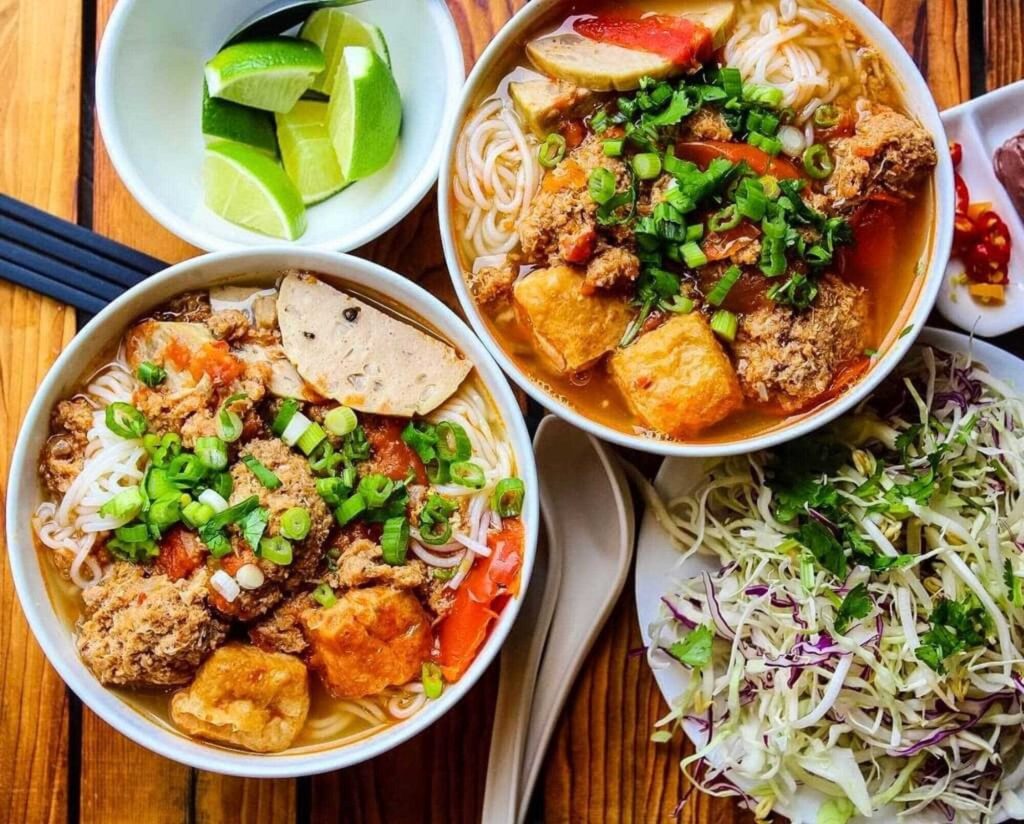
Ingredients
-
1 kg ground freshwater crab (cua đồng)
-
400 g fresh rice vermicelli (bún tươi)
-
100 g pork paste (giò sống)
-
200 g pork blood curd (huyết heo)
-
50 g dried shrimp
-
30 g dried squid
-
2 egg yolks
-
100 g pork fat (for rendering)
-
150 g tofu (fried or fresh)
-
500 g tomatoes
-
300 g mixed herbs and greens (e.g. Vietnamese balm, water spinach, perilla)
-
100 g shallots
-
20 g scallions
-
150 ml cooking oil
-
1 tbsp annatto oil (or red oil for color)
-
20 g fermented shrimp paste (mắm tôm)
-
20 ml fish sauce
-
Salt, sugar, MSG, pepper to taste
How to Choose Fresh Field Crabs (Cua Đồng) for Cooking
- Look for field crabs (cua đồng) with a muddy grayish-purple shell and a slightly lighter-colored carapace. To get meatier crabs, choose male crabs, which have a small, pointed apron (the underside flap). For more crab roe (used in dishes like bún riêu), select female crabs, which have a larger, rounded apron, often called “yếm bông” in Vietnamese.
- Choose crabs that are still active and move quickly, with all legs and claws intact and responsive. Press lightly on the apron; if bubbles appear, the crab is fresh and alive.
- For the best bún riêu cua (Vietnamese crab noodle soup), the crabs should be hand-pounded. This traditional method helps the crab paste rise into a soft, smooth, and flavorful curd. Using a blender is faster but often results in grainy or foamy textures that lack the signature richness.
- Avoid crabs with red eyes, hairy undersides, or star-shaped spots on their backs — these are signs of poor quality or possible contamination.
Nutritional Information
For: Omnivore, high-protein, traditional Vietnamese cuisine
Calories per serving (1 bowl): ~350–450 kcal
Key Nutrients
1. Protein (20–25g per bowl)
-
Source: Ground freshwater crab, pork paste, pork blood curd, dried shrimp, tofu
-
Benefits: Builds and repairs tissues; supports immune function; diverse protein sources add depth to flavor.
2. Healthy Fats
-
Source: Pork fat (rendered), cooking oil, egg yolk
-
Benefits: Aids vitamin absorption (especially fat-soluble vitamins like A, D, E, K); contributes to satiety and mouthfeel.
3. Complex Carbohydrates
-
Source: Fresh rice vermicelli
-
Benefits: Provides sustained energy; pairs well with protein for balanced digestion.
4. Iron & B12 (from animal sources)
-
Source: Pork blood curd, crab, dried shrimp
-
Benefits: Supports red blood cell production and cognitive function; particularly beneficial in traditional diets low in supplements.
5. Antioxidants & Anti-inflammatory Compounds
-
Source: Tomatoes, shallots, annatto oil, herbs (perilla, balm, etc.), garlic, mắm tôm
-
Benefits: Tomatoes are rich in lycopene (good for heart health); herbs and spices aid digestion and reduce inflammation.
6. Fiber (3–4g per bowl)
-
Source: Tofu, herbs, tomatoes
-
Benefits: Promotes gut health; helps regulate cholesterol and blood sugar levels.
1. Prepare the Field Crabs
Soak field crabs in water for about 1 hour to remove dirt and sand, then rinse well. Remove the apron and carapace, keeping the roe (crab fat) aside.
Scoop out the roe using a small spoon and place it in a bowl. Season it with a pinch of ground pepper and seasoning powder. Pound or blend the crab body until fine.
Place the ground crab into a large bowl, mix with a little salt and add water. Gently massage with your hand to extract the meat into the water. Filter the mixture through a fine sieve or cloth to remove shells and collect about 3.5 liters of crab broth.
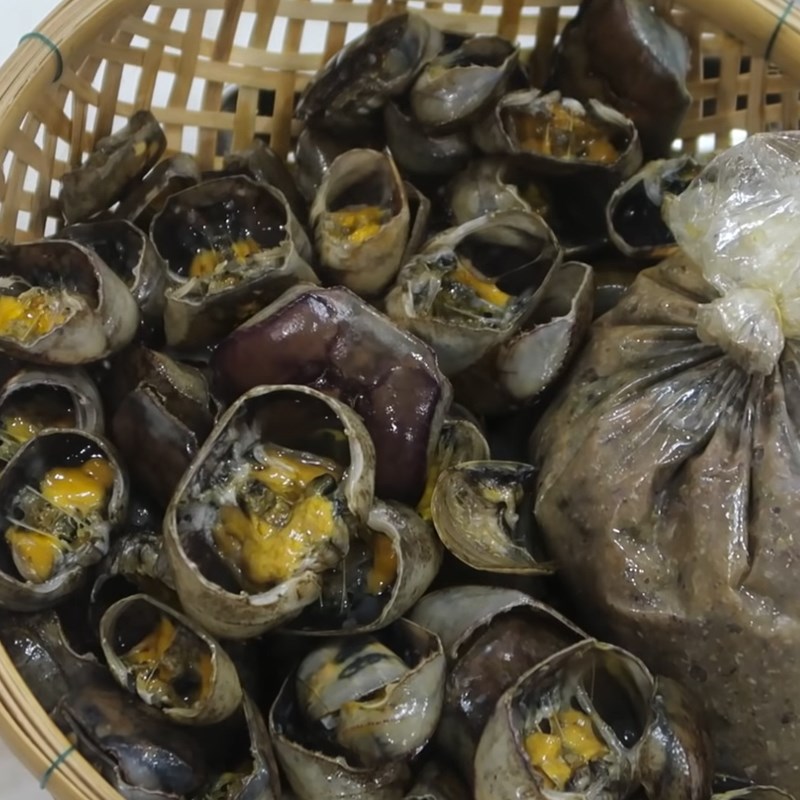
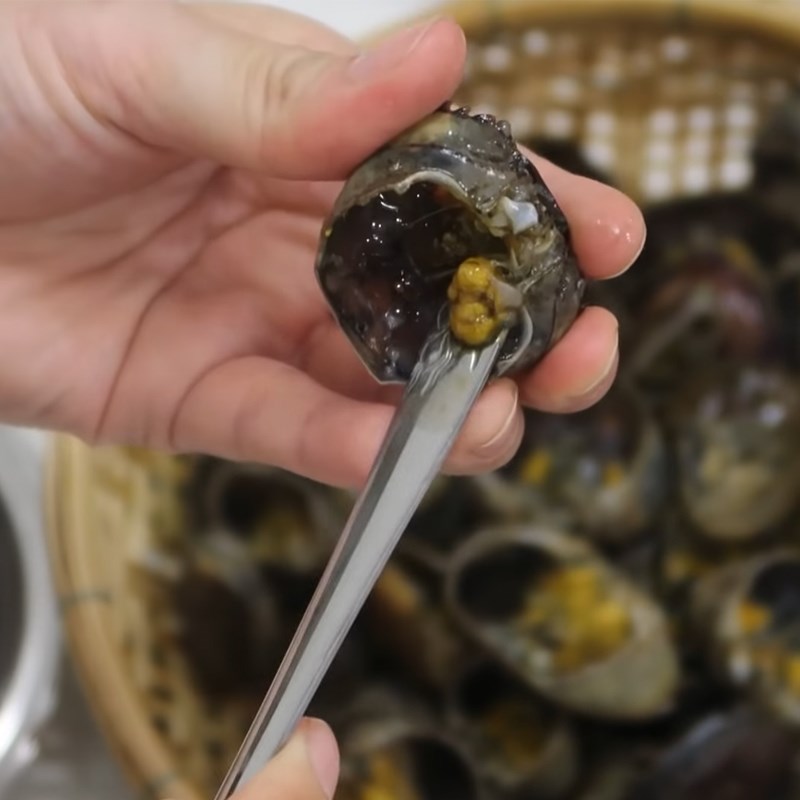

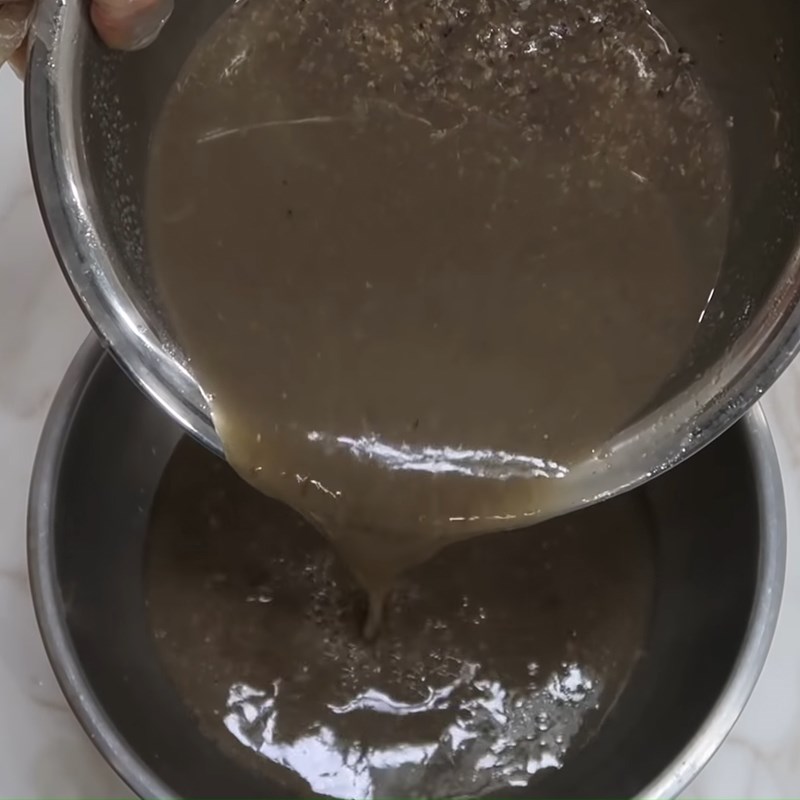
2. Prepare the Other Ingredients
Wash and dice pork fat into small cubes, then fry until golden and crispy. Reserve the rendered pork fat to cook other ingredients. Cut tofu into small pieces and fry until golden.
Chop half of the scallions and cut the rest into 3cm segments. Peel and slice the shallots. Wash and quarter the tomatoes. Parboil pork blood, then cut into bite-sized pieces.
Soak dried shrimp and dried squid for 30 minutes. Cut the squid into small pieces and pan-fry them together with the shrimp until fragrant.
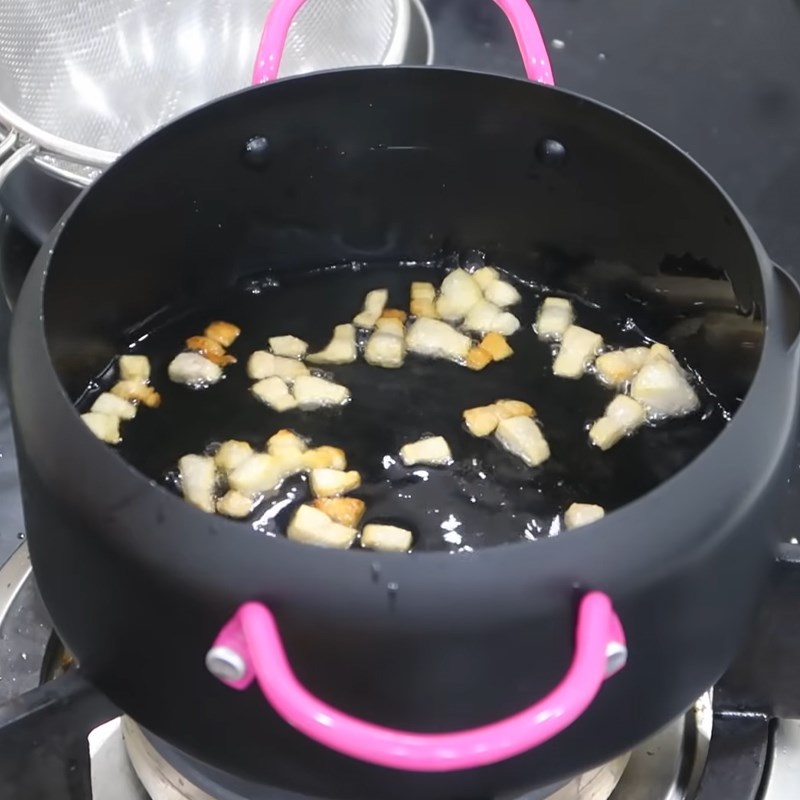
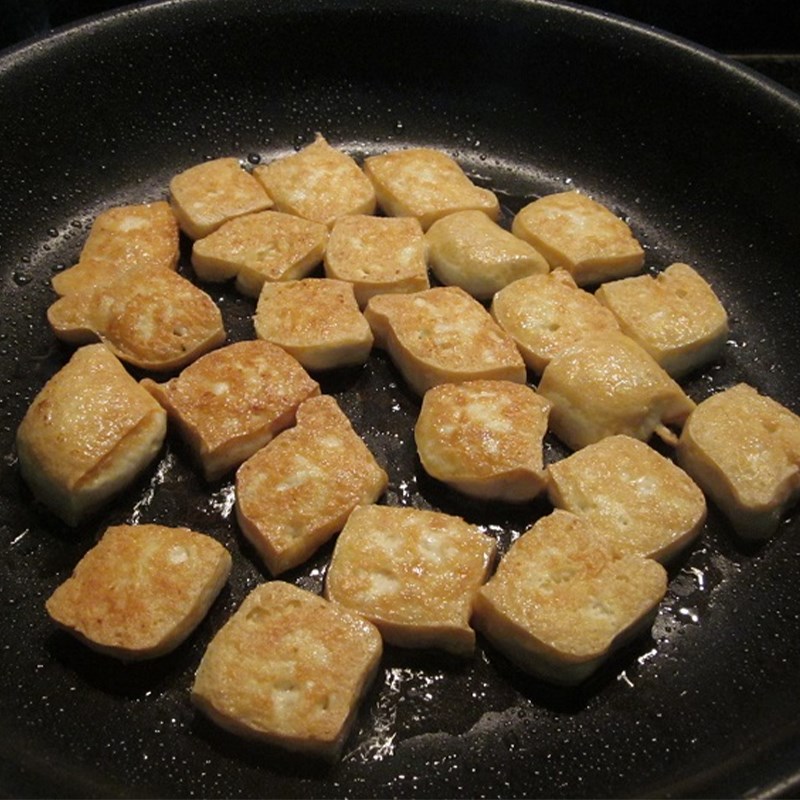
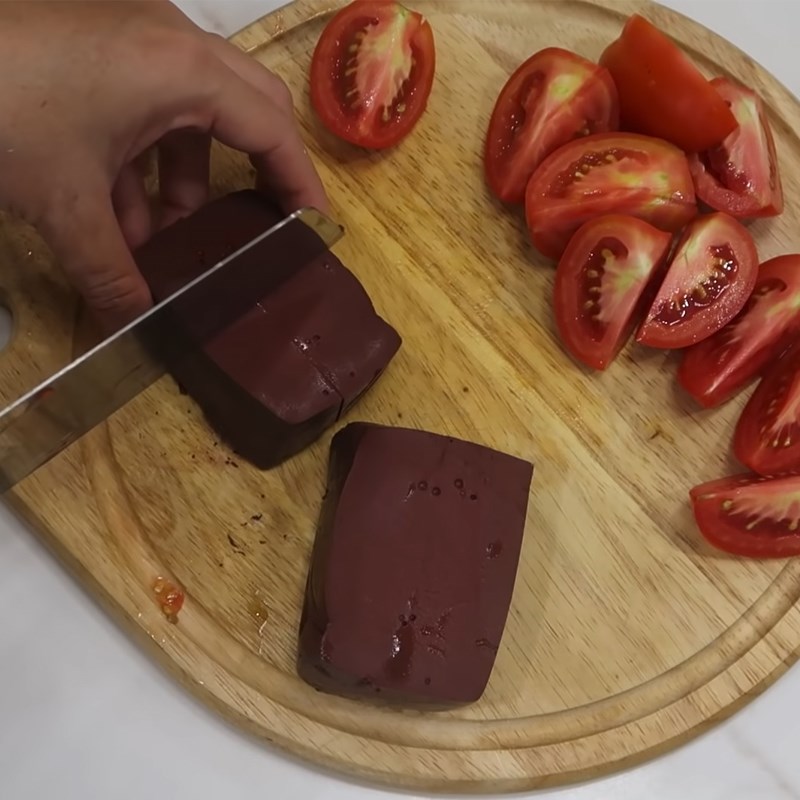
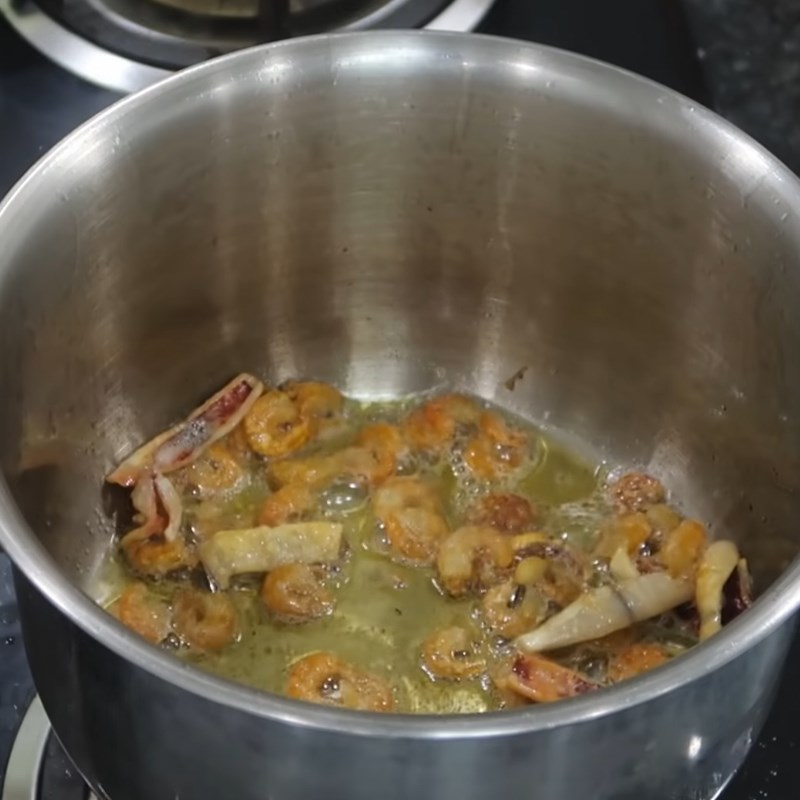
3. Fry the Shallots
In a deep pan, heat 150ml of oil (or leftover pork fat). Add sliced shallots and fry until golden brown.
Once the shallots are crispy, add the pork cracklings, fry briefly, then remove and drain.
Tips for crispy shallots without oil splatter:
-
Add 3–4 drops of lime juice and a pinch of salt to the oil before it gets hot.
-
Use enough oil (about 600ml for 500g of shallots) so the shallots are fully submerged and cook evenly.
-
Add shallots in batches and stir gently to avoid clumping or breaking.


4. Sauté the Crab Roe
Place the seasoned crab roe in a pan with 1 tablespoon of rendered pork fat and sauté until cooked and fragrant.
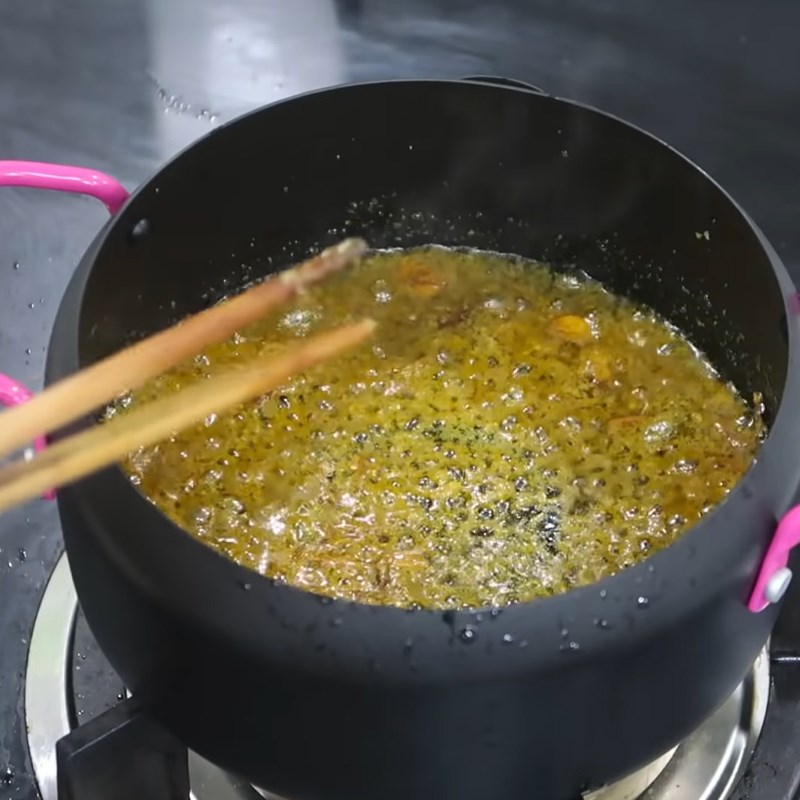
5. Make and Steam the Crab Patty
Mix 100g of raw pork paste (giò sống) with 2 egg yolks, 1 teaspoon MSG, chopped scallions, and a bit of crab broth.
Pour the mixture into a mold with about 100ml of crab broth and steam for 30–40 minutes. For a nice golden finish and enhanced flavor, spread a bit of sautéed crab roe on top of the patty before serving.
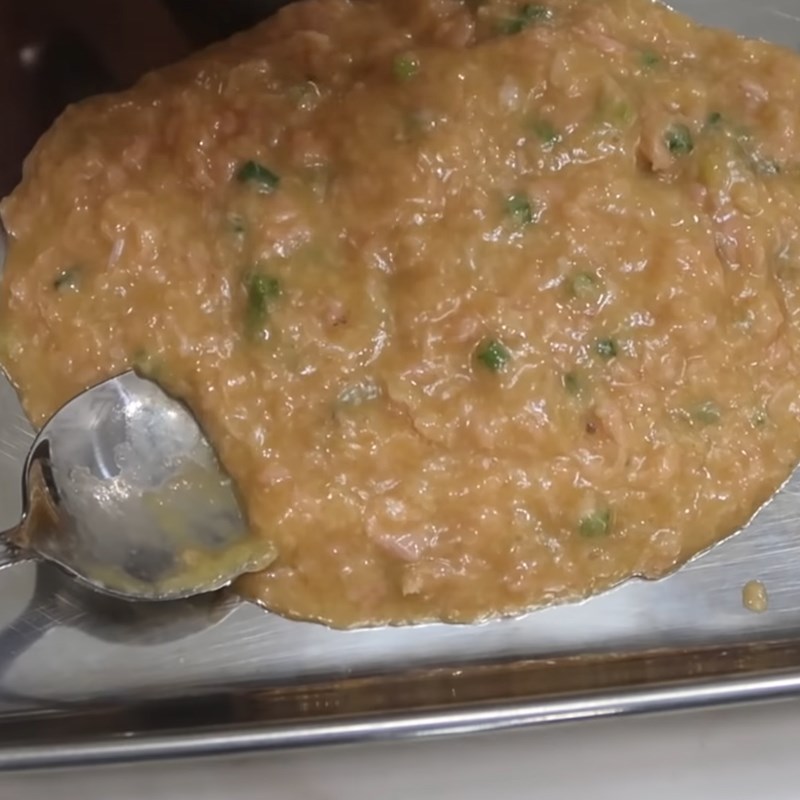
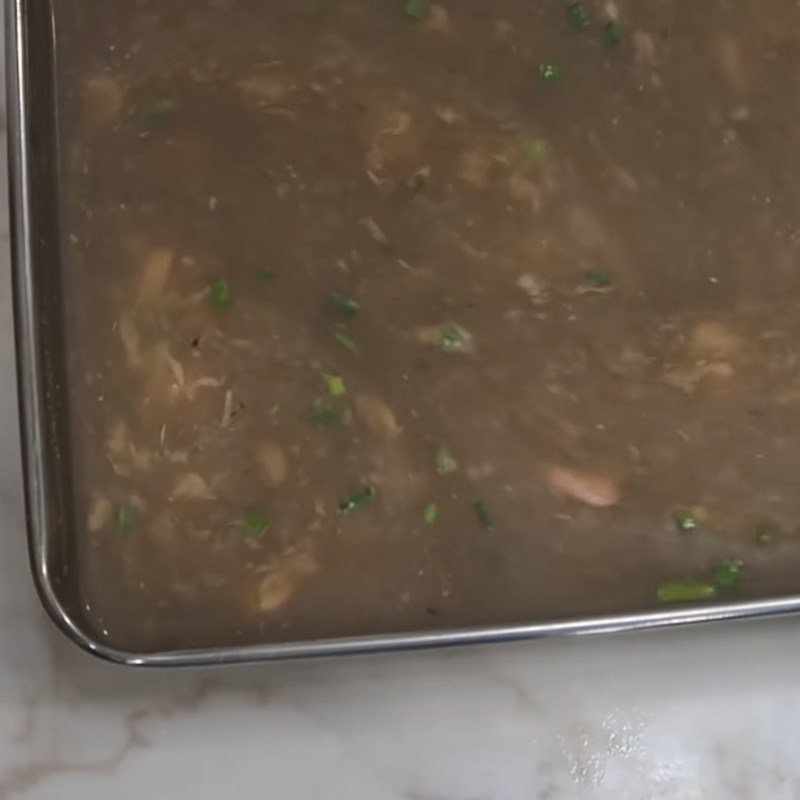
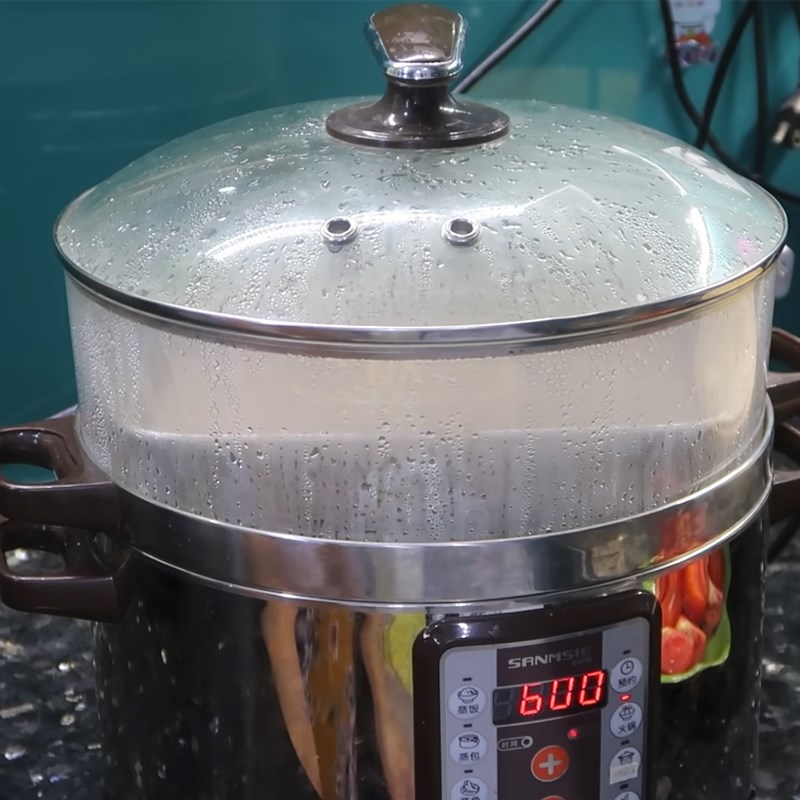
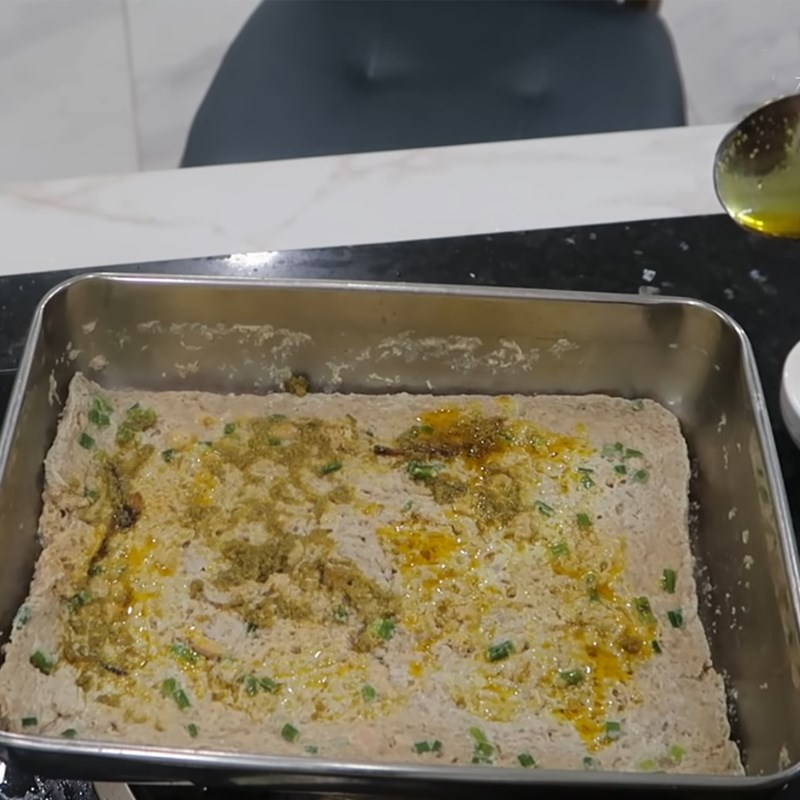
6. Sauté the Tomatoes
In a pan with some pork fat, sauté the quartered tomatoes with 1 tablespoon of annatto oil for 5 minutes until soft and colorful.
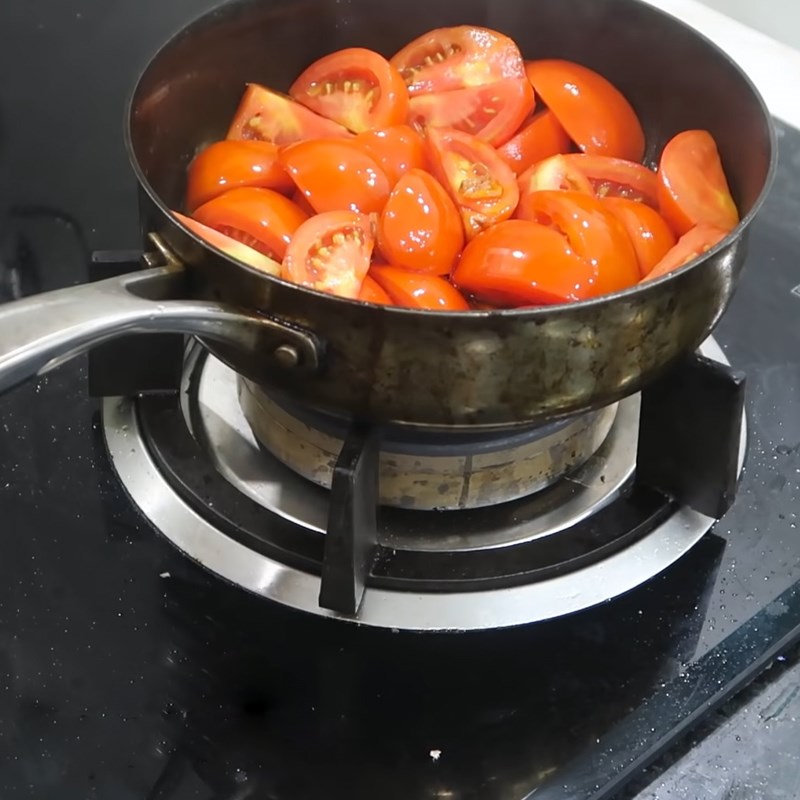
7. Cook the Broth
Place the fried shrimp, squid, and the leftover crab shells (wrapped in cheesecloth or a cloth pouch) into a pot with 1.5 liters of water. Simmer for 30–40 minutes to extract flavor.
Remove the shells, then add the reserved 3 liters of filtered crab broth. Simmer gently until the crab curd forms and floats to the surface.
Add the sautéed tomatoes, tofu, pork blood, chopped scallions, remaining crab roe, and steamed crab patty into the pot. Season with:
-
60g sugar
-
A pinch of MSG
-
20ml fish sauce
-
A bit of seasoning powder, pepper, and
-
20g fermented shrimp paste (mắm tôm) – for that iconic bún riêu aroma (optional if you’re not used to it).
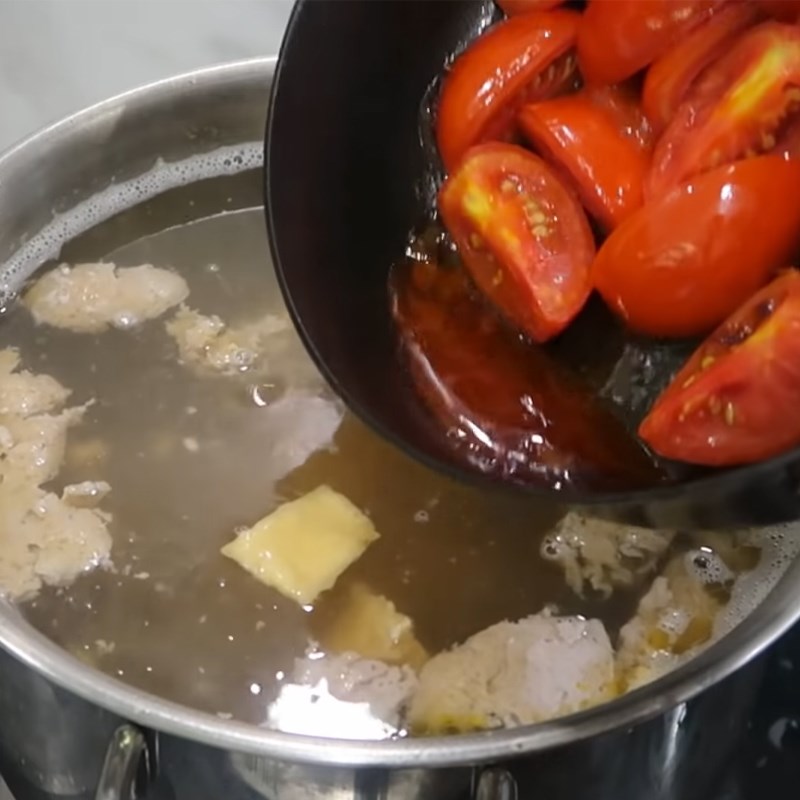
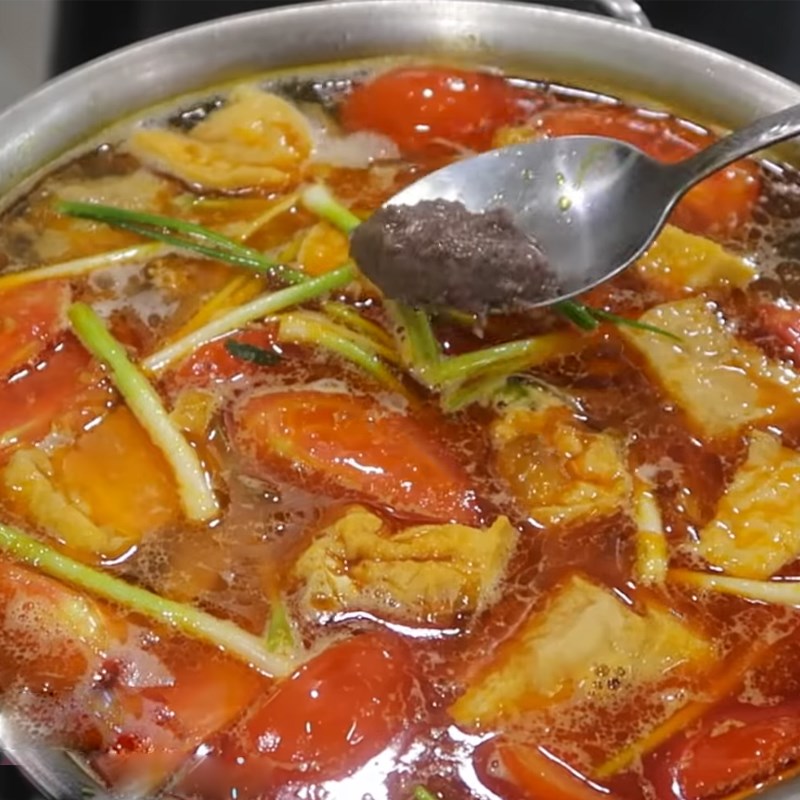
8. Serve
Add cooked rice vermicelli to a bowl. Cut the steamed crab patty into portions, and ladle in the rich broth with tomatoes, tofu, pork blood, crab curd, scallions, and crab roe.
Serve hot with fresh herbs and shredded water spinach (rau muống bào). The light yet flavorful broth, creamy crab curd, and rich toppings make bún riêu cua a deeply satisfying and uniquely Vietnamese dish.
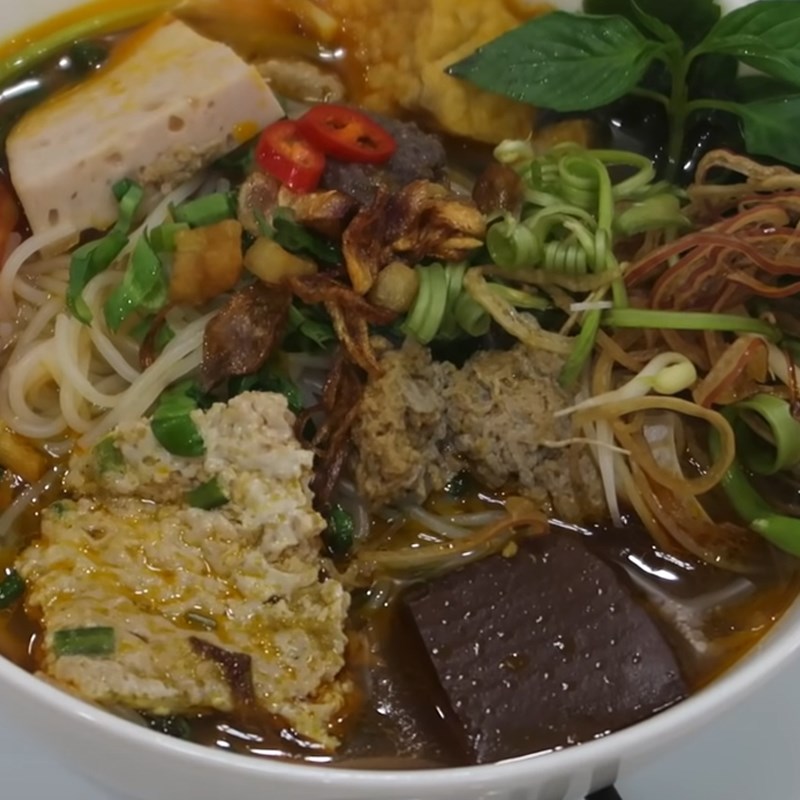
Field Crab Noodle Soup – A Bowl of Countryside Soul
Field Crab Noodle Soup is more than a dish — it’s a taste of the Vietnamese countryside, distilled into a bowl. Originating from the fertile plains of the Red River Delta, this humble noodle soup carries the scent of rice fields, the rhythm of daily life, and the tenderness of memory.
Its broth is not made from bones but from field crabs — those tiny creatures hiding under the soft mud after the rain. Crushed by hand in a stone mortar, they release a sweet, grassy aroma that mingles with the scent of lemongrass, tomatoes, and the faint sharpness of fermented shrimp paste. When the broth begins to simmer, a gentle crab curd rises to the top — soft, golden, and quivering — carrying the delicate sweetness of fresh crab and the whisper of the fields it came from.
The first sip is light yet lingering: a balance between the salt of the earth and the sweetness of labor. The broth dances with acidity from tomatoes, a hint of umami from shrimp paste, and the richness of fried tofu that soaks up every drop. Every ingredient — from the cubes of congealed pork blood to the tangle of vermicelli noodles — tells a story of patience and harmony, of how Vietnamese cooking finds depth not in extravagance, but in balance.
Beyond its taste, Field Crab Noodle Soup speaks to Vietnam’s cultural identity — the closeness between humans and nature, the respect for seasonality, and the belief that simplicity can hold grace. It’s a bowl that connects generations: grandmothers who rose early to catch crabs in the paddies, mothers who stirred the broth with practiced calm, and children who learned love through flavor.
Even today, in the bustle of the city, a bowl of this humble soup brings people home — to the scent of warm rice, the chatter of family, and the enduring comfort of food made with both hands and heart.

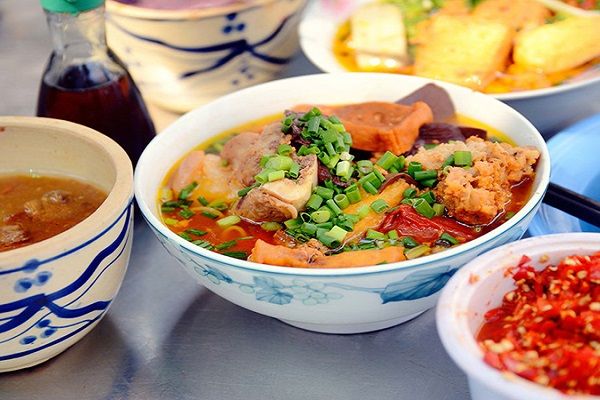
(Bún Riêu Cua is a familiar dish in Vietnamese traditional cuisine)